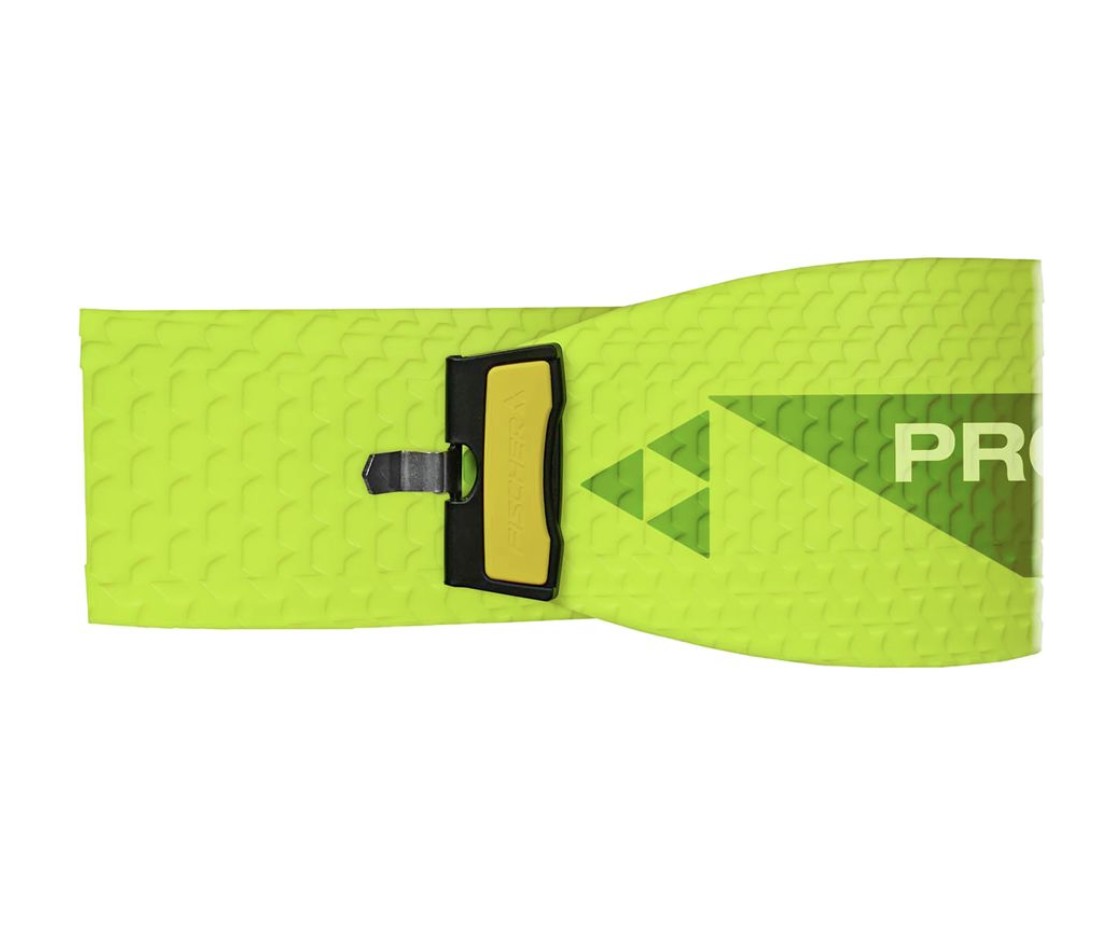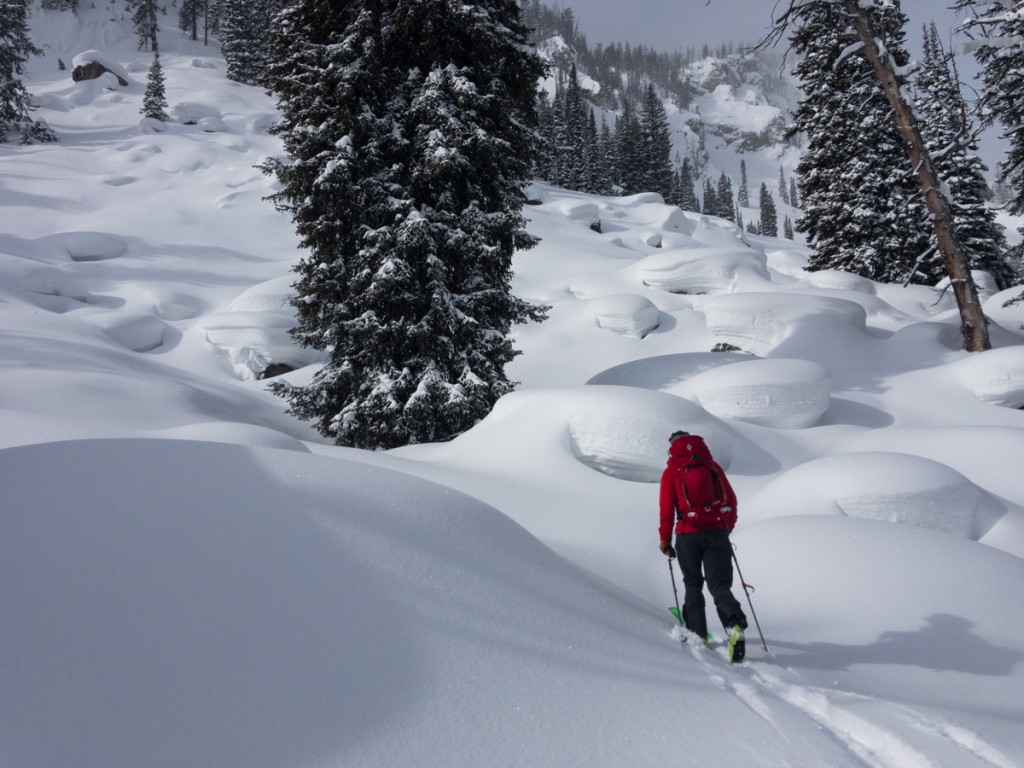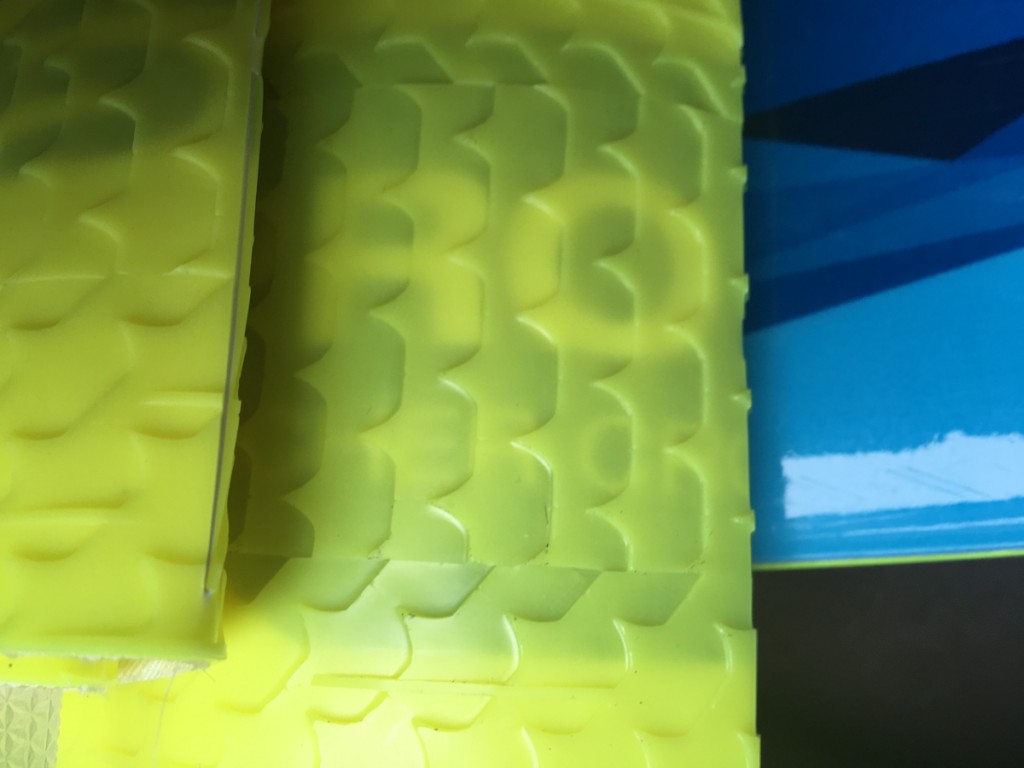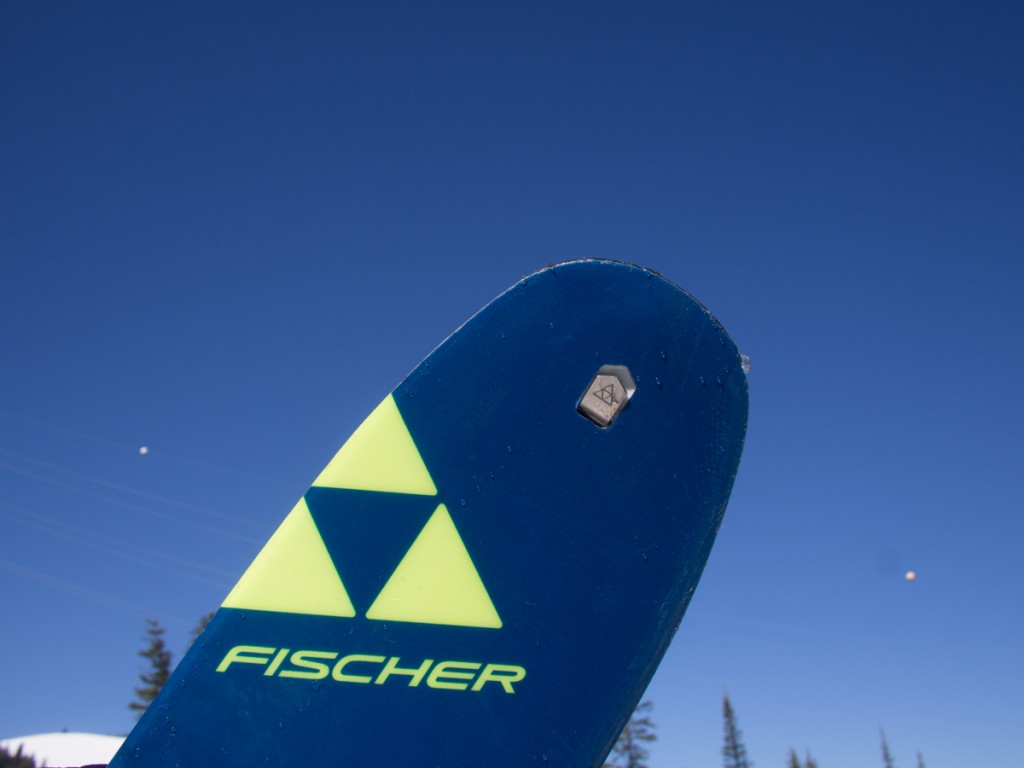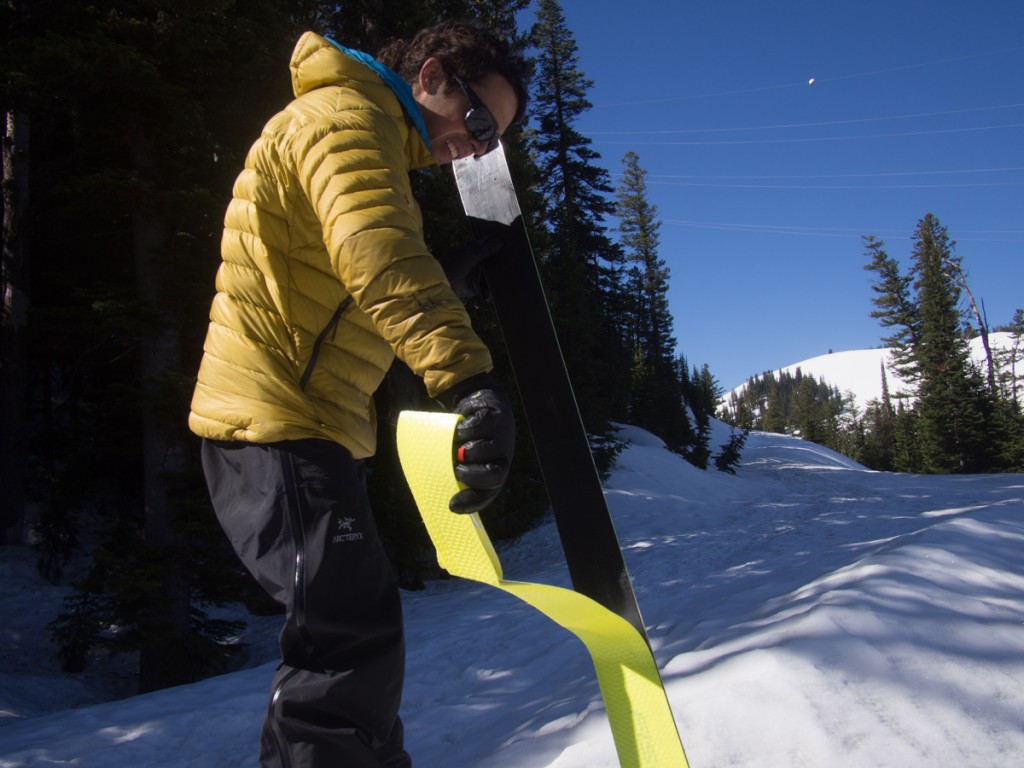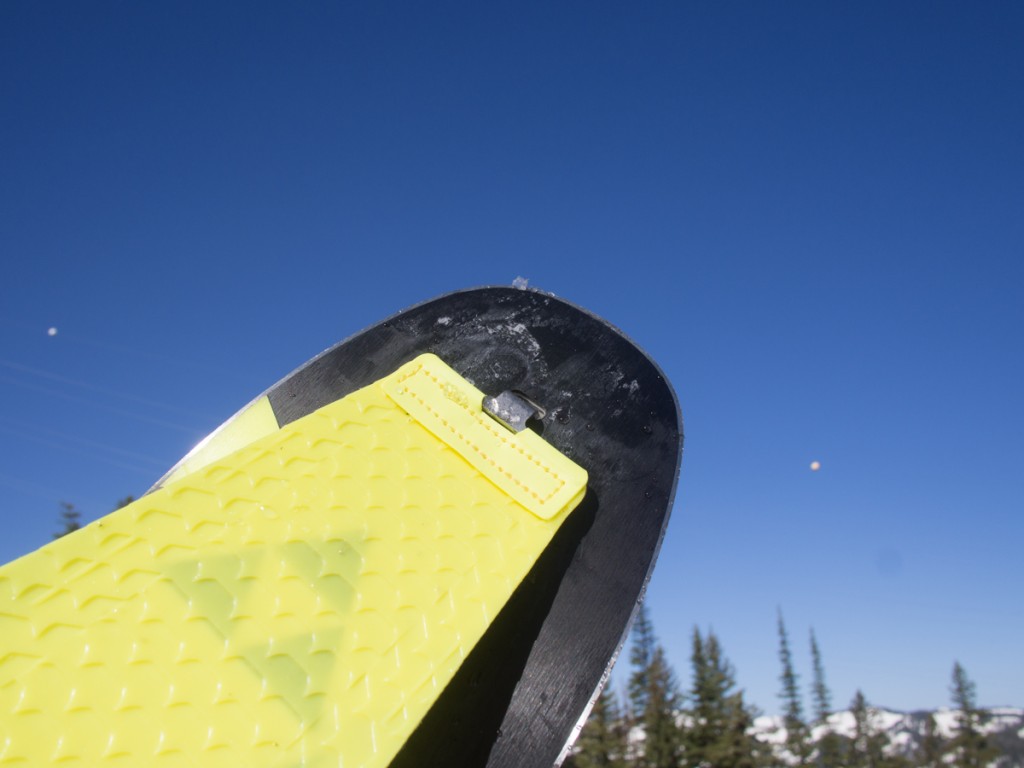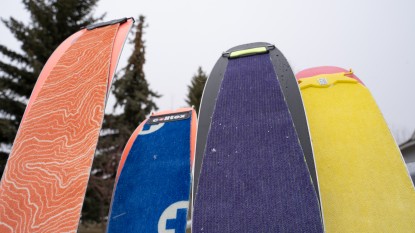Fischer PROFOIL Hannibal Review
Our Verdict
Our Analysis and Test Results
It is as if Fischer took one of their wax-less nordic ski bases, peeled it off, and glued it for application to your backcountry skis. These are nothing like “normal” climbing skins. The traction comes from the directional “fish scale” pattern molded into the plastic sheet that makes up the bulk of this product. This is a unique, innovative approach that wins some and loses some.
Performance Comparison
Glide
The Profoil skins glide better than all the rest. The hard plastic base glides almost like a ski base. The fish scales slow you down and inhibit side slipping, so you can't fully turn on them like “normal”, but the increase in glide is real. The glide differential, as compared to regular fabric skins, is greatest on spring melt-freeze snow, whether that snow is in its frozen state or slushy. On powder and cold snow, the glide differential is less. In either case, though, the Profoil glides better than any regular fabric.
In powder snow, the difference in glide between these and something fully mohair is minimal. On dry snow, fast mohair skins are almost as fast as the Profoil. On icy snow, though, the Profoil is markedly faster than anything else available. By comparison to the Profoil, something made of full nylon feels like lead boots in all snow conditions. The glide advantage of the Profoil is real and valuable.
Grip
Just like with all skins and all attributes, there are trade-offs to be made. In our experience and head to head testing, the Fischer is the poorest gripper; the plastic scales just don't grab as fabrics do. This differential in grip, between the Profoil and regular fabric skins, in perfect contrast to glide characteristics, is greatest on icy snow and less on powder snow. On icy skin tracks, the Profoil is frustrating and could be dangerous. On well-angled powder skin tracks with good technique, you might not notice any grip drawbacks. Beginning skinners and those that are generally a little less patient with their climbing should avoid the Profoil. Skinning technicians will simultaneously dig the greater glide and be able to adjust to less grip.
Every other skin in our test grips better than the Profoil. In hours and hours of head to head testing, we found that certain mainly mohair skins are down there with the Profoil, but still grip a little better when you consider all conditions. The blended skins grip quite a bit better. You will find reports online of the Profoil gripping better than other skins; we tried and tried to simulate these results, but could never get the Profoil skins to grip better than any fabrics in any conditions. Our test period allowed for the input of a handful of skiers over three months' worth of Teton winter and spring skiing. We feel we encountered a broad and deep spectrum of circumstances and can make an authoritative assessment of the characteristics of these skins. We never found them to grip as well as any other skin formulation.
Glue Integrity
The glue is super sticky. However, that is only part of the equation. In total, the Profoil stays on your skis as well as you'd need it to, provided you are careful in your use. The main issue with glue security is the stiffness of the plastic sheeting and the creases that form in storage. Because of the stiffness and the folds in the material, it is challenging to get the entire length of the glue stuck securely onto your ski. There will be small gaps. At first, this isn't a big issue. What happens with time, though, is that snow and water sneak into those gaps and begin to lever the skin off the ski. Wet, icy glue doesn't stick any longer. This degradation in contact is a one-way street. As skins peel off in use, they won't stick back on without intervention. This is the case for all skins.
The glue itself is super sticky. It is so sticky that Fischer recommends you do not store them “base to base”. Instead, it is advised that you roll them up such that the glue sticks to the fish scale side of the “skin”. However, the creased and stiff construction means that glue slowly creeps off your ski.
Icing Resistance
In our experience, this is also where the Fischer skins really shine. The hard plastic base is less prone to icing and soaking than the fabric skins. Drying them out is almost as easy as shaking the ice and water off. Of course, in the gnarliest of sticky snow conditions, the surface of almost anything will ice up. The Profoil isn't immune to this, but it does much better than the competition.
Only the all nylon skins come close to the anti-icing performance of the Profoil. The remainder of the products we test have more significant icing issues. It is for glide and anti-icing characteristics that the ProFoil skins earn our Top Pick.
Portability
These are bulky skins. The weight is right in line with others, once you correct for ski size, but the packed bulk is significant.
Portability is difficult to compare directly, as all our tested skis are different sizes. Nonetheless, we have enough experience and enough things to compare so as to generate useful deductions. The weight of the Fischer is right in among the lighter skins. The bulk, though, is on the other end of the spectrum. These skins take up space in your jacket, pocket, or pack more comparable to the biggest products we've assessed.
Compatibility
Compatibility is pretty easy to assess. In most cases, skins are either universal in fit, after some trimming, or they are cut and designed to work with specific skis. There are versions of the Profoil that are universal, but we tested those specifically cut and equipped to work with Fischer Skis. We have seen user-cut Profoil skins on other non-Fischer skis and observed them to be a little rough and clumsy. The plastic material simply doesn't cut as nicely as the fabric of other products.
Profoil skins definitely perform better with Fischer skis. Otherwise, most of the skins we tested are universal in compatibility.
Value
As a niche, “quiver” product, value is not a super important consideration. These are a luxury item. For he or she that wants them and can employ the specialized advantages, the cost isn't a huge issue.
Conclusion
Skin innovations keep coming, and each one certainly has appeal, but none have yet to fully displace the traditional formula. The Fischer Profoil is truly unique and has valuable advantages, but the design isn't fully “ready” to take over. Innovation is costly and risky. Overall, these skins aren't likely to entirely displace traditional skin construction, but there are enough benefits and enough of a niche to fill that their place in the market has “traction”.


